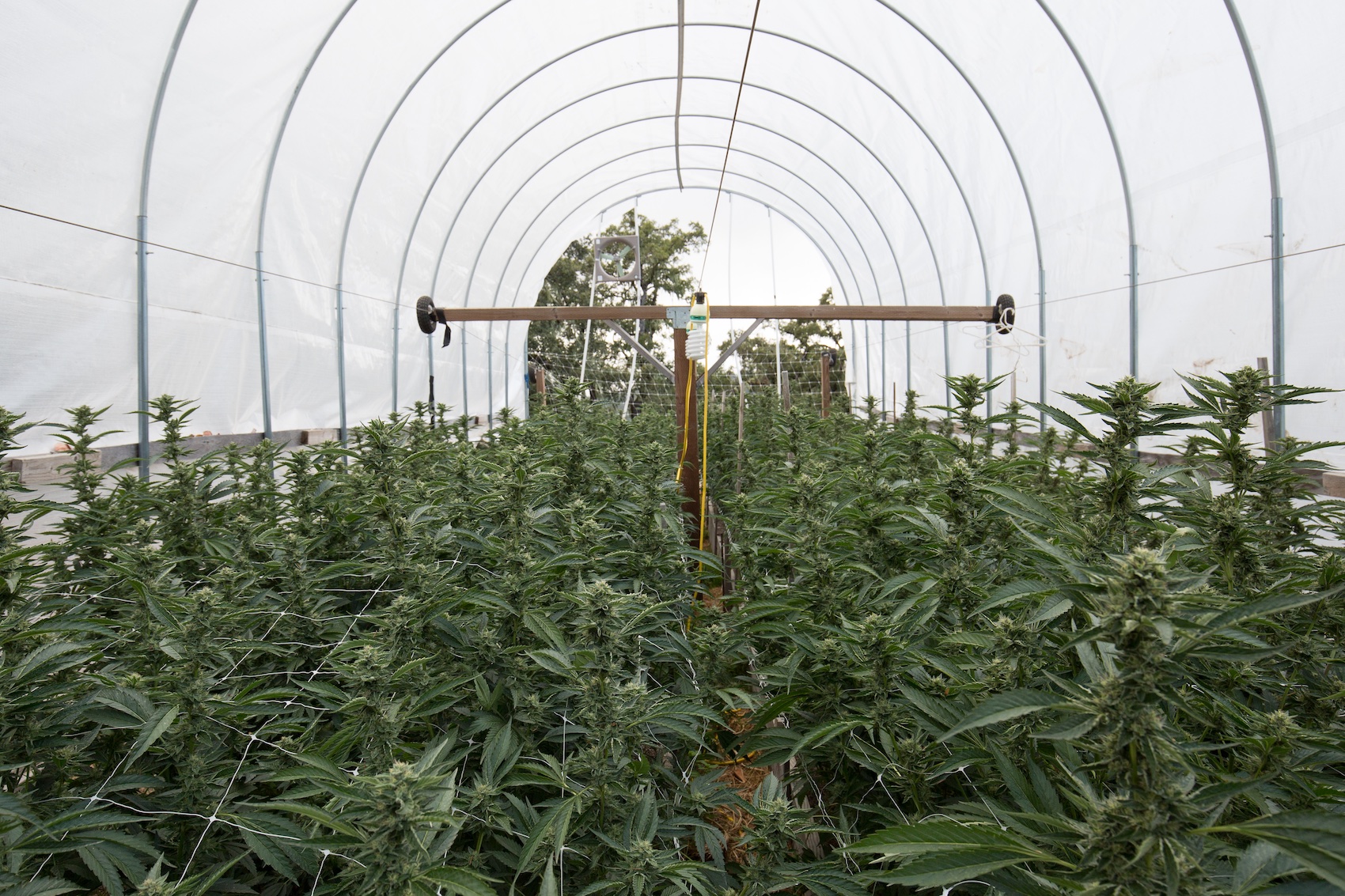- Whether cultivating indoors or outdoors, there are simple pruning or pinching techniques that can boost harvest yields.
- An essential step in achieving this involves understanding the redistribution of auxins within the plant's tissues. These plant hormones interact with others to form a kind of "nervous system" for the plant.
- Auxins are used to help stimulate nearly every facet of cannabis growth. Here's how they work.

Auxins are a group of plant hormones that influence numerous physiological and morphological processes. One of their primary functions is cell elongation. By accumulating in plant tissues, auxins stimulate cell elongation, contributing to stem and root growth.
Auxins are found in all kinds of plants, not just cannabis. In fact, auxins were the first plant hormones to be discovered, back in 1880, when Charles Darwin conducted a series of experiments to determine how light affects growth direction in oats.
In addition to playing a crucial role in cell elongation to drive plant growth, auxins also affect roots depending on the ratio of auxins to cytokinins, another type of plant hormone that promotes cell division and differentiation. More specifically, a high concentration of auxins in a shoot can cause its cells to grow faster, while a high concentration in roots can slow down shoot cell growth.
This is because auxin movement within a plant occurs from the growth tips to the root tips through the phloem, the plant tissue made up of vessels that transport sap. This highlights one of auxins' remarkable abilities: they can move within the plant, travelling from where they are produced to areas where they are needed, a process known as polar transport.
Among the many types of auxins, the main compound is indole-3-acetic acid (IAA), a naturally produced organic molecule, followed by indole-3-butyric acid (IBA). Auxins are also essential for forming adventitious roots, which develop in unexpected locations, such as cuttings.
For this reason, auxins are a key ingredient in some commercially available rooting hormone products used for cloning or cuttings. Since IAA degrades over time and with long-term storage, most commercial rooting gels contain IBA or a synthetic auxin, such as naphthaleneacetic acid (NAA).
How Pruning or Pinching Affects Auxin Distribution
Good pruning begins in the vegetative stage using techniques with various names, such as "pinching," "super-cropping," or "FIM," each with its own application method. However, the goal is the same: to trigger the release or redistribution of the plant's growth hormones-auxins.
Auxins produced at the cannabis plant's central tip can inhibit the growth of lateral buds. In other words, auxins in the main stem can suppress growth in surrounding secondary shoots. This phenomenon is known as apical dominance. By removing the apical tip through various pruning techniques, this inhibition is eliminated, allowing lateral buds to develop more fully, resulting in a wider plant with more horizontal growth.
When the dominant upper or terminal shoot is cut or pinched, its auxin concentration redistributes to the surrounding lower lateral shoots. This causes these secondary branches to grow more vigorously and also helps induce new growth in the form of additional upper shoots, which will later produce many more main colas during flowering. This is typically done to achieve a bushier plant with multiple decent-sized buds rather than a taller plant with one large central bud.
If you're cultivating a small number of plants per square metre, pruning or pinching the apical tips is useful for better light utilisation. Regular pruning is also advantageous if you're aiming to develop a robust mother plant, as the resulting plant will have many lateral branches.

Other Notable Functions of Auxins
Auxins are also involved in how plants respond to environmental stimuli, such as light and gravity. Positive phototropism refers to movement towards light, while negative geotropism describes growth against gravity. These responses are essential for ensuring cannabis plants orient themselves correctly to maximise light absorption, a crucial factor in developing healthy, productive buds.
Auxins are also highly beneficial for re-vegetating plants after flowering. For instance, if your plant is ready for harvest but you're fortunate enough to live in a sunny climate with mild winters and want the plant to return to its growth stage, using auxins can be incredibly helpful. There are various types of auxin concentrates available on the market for this and other purposes.
The final effectiveness of these auxin concentrates depends on several factors, such as the timing of application (development phase, time of day), the application method (leaves or roots), or concentration, which is particularly important: low concentrations stimulate root growth, while high concentrations promote ethylene production, leading to premature flowering.
As you can see, auxins are a fundamental piece in the puzzle of plant growth, particularly in cannabis cultivation. From root formation to growth orientation and resource regulation, these hormones influence nearly every aspect of plant development. For cannabis growers, understanding how auxins work and learning how to use them effectively can make all the difference in a successful harvest.



Comments from our readers
There are no comments yet. Would you like to be the first?
Leave a comment!Did you like this post?
Your opinion about our seeds is very important to us and can help other users a lot (your email address won't be made public).